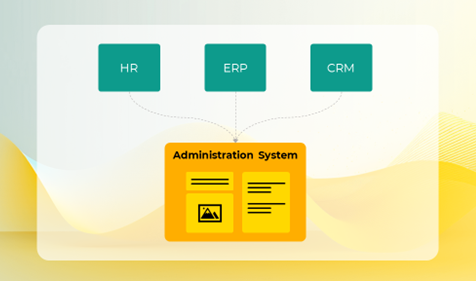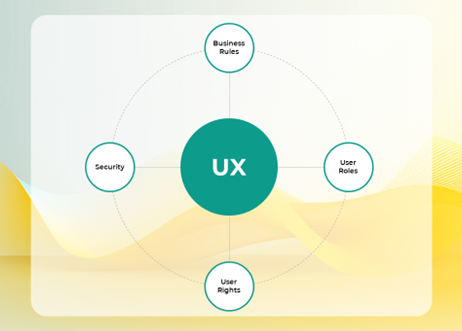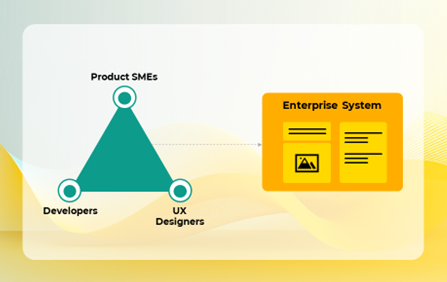Top B2B UX Design Strategies for Success
Table of Contents
In the world of enterprise software, UX (User Experience) design is critical. While B2C UX design often gets more attention, B2B UX design faces unique challenges and opportunities. The key focus here is on functional efficiency, catering to specific user groups who rely on these systems daily.
This post dives into four critical insights for mastering B2B UX design, ensuring your enterprise software exceeds user expectations.
B2B UX Design is Different Than B2C UX Design
B2B UX design is fundamentally different from B2C UX design.
While B2C design often targets a broad audience with diverse needs, B2B design zeroes in on specific user groups, frequently comprising power users who interact with the software intensively.
These users, often professionals deeply familiar with the systems they use, require software that prioritizes efficiency and functionality over visual engagement.
Streamline Workflows and Enhance Productivity
Unlike consumer applications that might prioritize engaging visual content to capture attention, enterprise software must facilitate smooth and rapid task completion.
- For example, a dental practice management system must enable users to quickly access patient records, schedule appointments, and update treatment details multiple times a day. Here, the emphasis is on reducing the time and effort required to perform these tasks, minimizing friction, and maximizing efficiency.
Understanding the unique challenges of B2B UX design involves:
- Recognizing the specific needs and pain points of your power users.
- Creating interfaces that support their daily tasks, reducing repetitive strain, and enhancing overall productivity.
This approach ensures that the software becomes an indispensable tool in their professional toolkit, rather than just another application they need to navigate.
Function Over Form in B2B UX Design
For enterprise software, the mantra is “function over form.”
Unlike consumer applications that may leverage visually captivating designs to attract users, enterprise software focuses on organizational and user efficiency.
The primary objective is to design systems that support seamless interactions within a broader ecosystem of applications.
B2B UX Design is about Ecosystems
Enterprise software often involves intricate integrations with various internal and external systems.
For example, consider an internal administration system used by a large corporation. This system needs to interact with HR databases, financial software, customer relationship management (CRM) tools, and more. The design must ensure that these interactions are smooth and intuitive, enabling users to transition effortlessly between different tasks and applications.

This ecosystem approach to design requires a deep understanding of how different applications interact and how users move through their workflows.
It’s about creating a cohesive user experience that minimizes disruptions and supports continuous productivity.
By prioritizing function over form, designers can ensure that the software serves its primary purpose – to facilitate efficient and effective task completion.
Managing Complexity in B2B UX Design
One of the most significant challenges in B2B UX design is managing the inherent complexity of enterprise software.
These applications often come with a web of intricate business rules, user roles, permissions, and security concerns.
UX designers must act as translators, converting complex business and technical requirements into user-friendly interfaces.

Understanding User Roles
Enterprise software must accommodate various user roles, each with different access levels and permissions.
For instance, a customer service application might need to provide frontline agents with access to customer interaction histories while restricting access to sensitive financial information.
Designers must ensure that these role-based permissions are intuitively integrated into the user interface, enabling users to perform their tasks without encountering unnecessary barriers.
Designing for Security
Security is another critical concern in enterprise software.
Applications handling sensitive data, such as financial records or personal information, must incorporate robust security features. This includes not only technical safeguards but also clear and intuitive interfaces that help users understand and manage security settings effectively.
Adhering to Regulations
Enterprise software often needs to comply with complex regulatory requirements.
This adds another layer of complexity, as designers must ensure that the software remains compliant while still being user-friendly. This might involve creating interfaces that guide users through compliance-related tasks or integrating automated checks that simplify the compliance process.
To manage this complexity effectively, UX designers must have a thorough understanding of the industry and the specific use cases they are addressing.
This often involves working closely with subject matter experts and continuously iterating on designs based on user feedback and evolving requirements.
Collaboration and Team Dynamics Are Critical for B2B UX Design
Effective B2B UX design is a collaborative effort.
It requires close coordination between UX designers, product teams, developers, and subject matter experts.
Each team member brings a unique perspective and set of skills, contributing to the creation of a cohesive and functional software solution.
UX is the Bridge
In this collaborative environment, UX designers often act as a bridge between different stakeholders.
They translate business requirements from product teams into user-centric designs, while also working with developers to understand technical constraints and possibilities. This triangular approach ensures that all aspects of the software are considered, from functionality and usability to technical feasibility.

For example, product teams possess deep organizational knowledge and understand the functional requirements of the software. They provide essential insights into why certain features are necessary and how they should work.
Developers, on the other hand, bring technical expertise, knowing how to implement these features within the constraints of the existing system architecture.
UX designers must synthesize this information, creating interfaces that meet business needs and technical constraints while ensuring a positive user experience.
This involves regular communication, collaborative problem-solving, and a willingness to iterate quickly based on feedback and new insights.
Establish Clear Communication Channels
To foster effective collaboration, it’s crucial to establish clear communication channels and processes.
This might include regular meetings, shared documentation, and collaborative design tools. Recording meetings and maintaining detailed notes can also help ensure that everyone is on the same page and that valuable insights are not lost.
Conclusion
Mastering B2B UX design is about understanding the unique challenges and opportunities of designing for enterprise software.
By focusing on efficiency and functionality, managing complexity, and fostering collaboration, UX professionals can create software that not only meets but exceeds user expectations.
In doing so, they contribute to the creation of tools that empower professionals, streamline workflows, and enhance productivity, ultimately driving business success.
